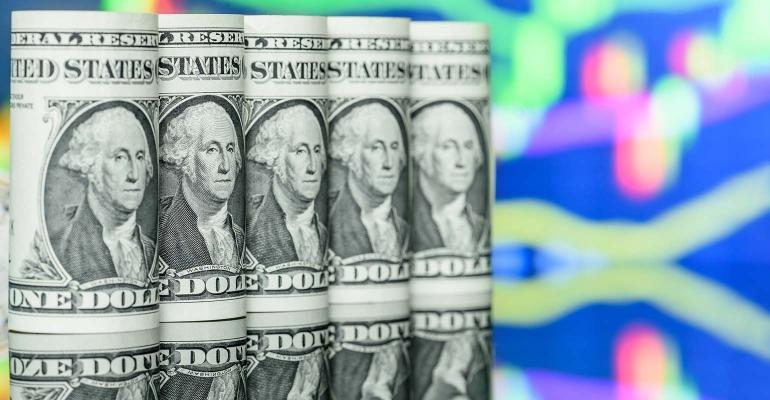(Bloomberg) -- There are finally some good options for people looking to park their cash. In fact, Goldman Sachs Group Inc.’s consumer bank Marcus is struggling to keep up with the surging yield on 10-year Treasuries.
Marcus increased its interest rate for savings accounts to 3.75% this week. The 10-year, meanwhile, surged north of 3.8% Thursday amid concerns about persistent inflation. It’s a stunning turn from a year ago when the Marcus rate was 0.5% and the 10-year yield topped 2% for the first time since 2019.
Read more: S&P 500 Haters Now Make Enough in Treasuries to Bid Stocks Farewell
High-yield savings account providers have boosted payouts as the Federal Reserve tries to get inflation under control by hiking benchmark interest rates. With both stocks and bonds performing poorly in 2022, many investors turned to cash-like instruments to keep their money safe while still generating a return. That’s continued into this year, with money market funds and Series I savings bonds attracting fresh inflows.
As banks seek to attract customers, the competition is pushing rates higher. Marcus rivals Barclays Plc and Ally Bank currently offer 3.6% and 3.4% respectively.
Meanwhile, 10-year yields have been volatile: They dropped more than 80 basis points from early November to mid-January, before rallying this month.
Options for Cash
Beyond high-yield savings accounts, several other instruments offer attractive returns for cash, depending on an investor’s time horizon.
If you don’t need the cash for a while, I bonds offer some of the best yields right now, said Eric Roberge, founder of Beyond Your Hammock, a wealth management firm in Boston. Purchases made between now and April 30 will receive an interest rate of 6.89% for the next six months, and investors are piling in.
The downside is that these bonds must be held for at least a year, and withdrawing your cash before five years means losing interest from the prior three months.
Kyle Moore, founder of Cru Wealth Management in Texas, recommends looking into certificates of deposit, which typically lock up customers’ money for a set period of time, in exchange for interest. For instance, Marcus currently offers a 12-month CD for 4.5%, while Capital One offers an 11-month CD with a 5% interest rate. There are shorter maturities as well, but they typically offer less in interest. For his clients, Moore has been creating “ladders” of CDs recently.
“A ladder is simply buying a variety of maturity dates, so you have some cash become available every two or three months and you have a chance to reevaluate your needs,” he said.
Treasuries
For those still interested in Treasuries, exchange-traded funds can offer an easy way to buy in. Products with the best performance right now include BlackRock’s iShares 20+ Year Treasury Bond ETF (TLT) and iShares 7-10 Year Treasury Bond ETF (IEF).
In addition, ultra-short bond ETFs can effectively act as cash-like instruments since many mature in under a year. Two of the most popular ones are the JPMorgan Ultra-Short Income ETF (JPST) and the Vanguard Ultra Short Bond ETF (VUSB), both of which have a 12-month yield of about 2%.
It also might not be a bad time to use that cash to buy stocks, according to James Osborn, founder of Envest Asset Management in Connecticut. If you have enough emergency savings and won’t need the cash in the near future, he recommends looking into low-cost diversified ETFs or mutual funds.
“The market was beaten up pretty good in 2022,” he said. “Over the long term, investing in the market now could be a good buying opportunity.”
To contact the author of this story:
Claire Ballentine in New York at [email protected]




